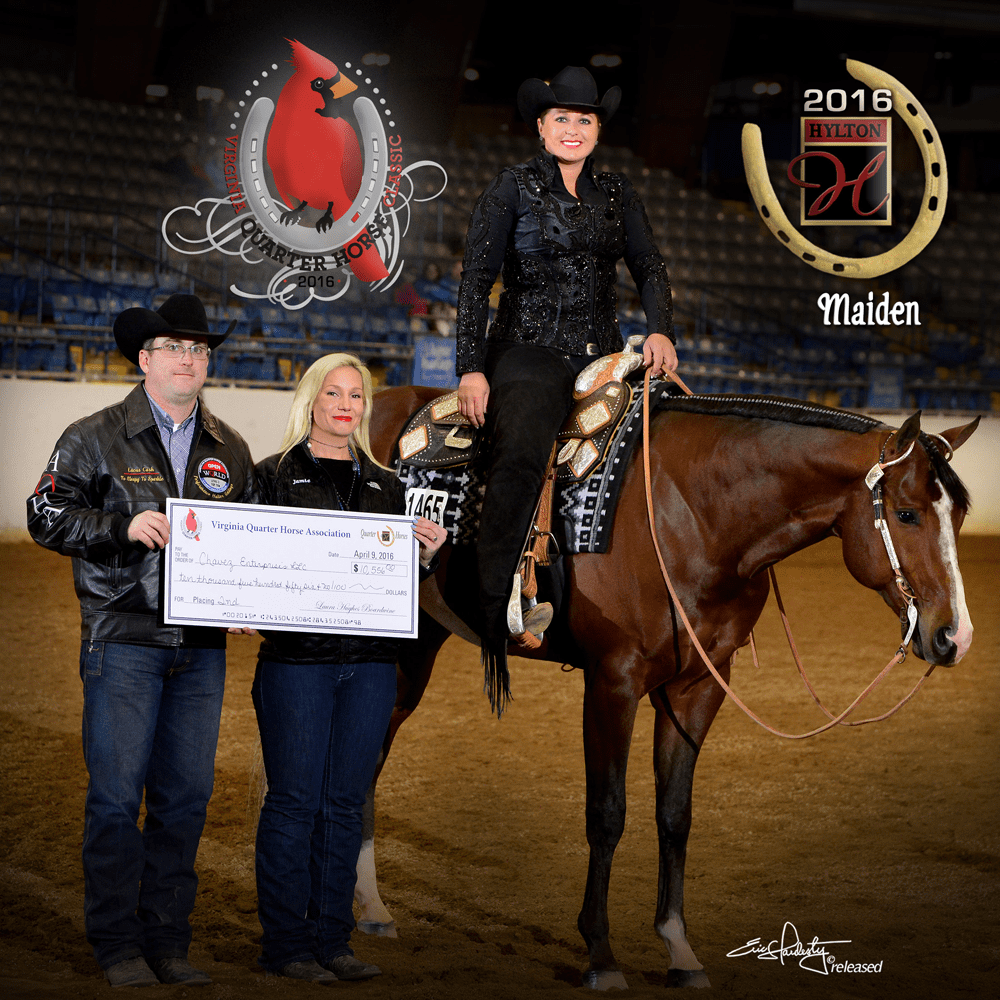This time of year many trainers, assistants and colt breakers around the nation are spending most of their time in round pens breaking their two-year-olds. During this time, everyone has their fingers crossed in the hopes of having the next great one. But for many of the industry’s top trainers, the process of preparing these young horses for training begins much earlier than the turn of the new year.
While there will always be controversy and conversation about the right time to start riding prospects, we caught up with several trainers to discuss their methods for safe, efficient and positive training techniques of two-year-olds.
Beginning with Basics
The consensus from most of the industry’s leading futurity trainers is that they start their long yearlings in November and December in the form of ground basics.
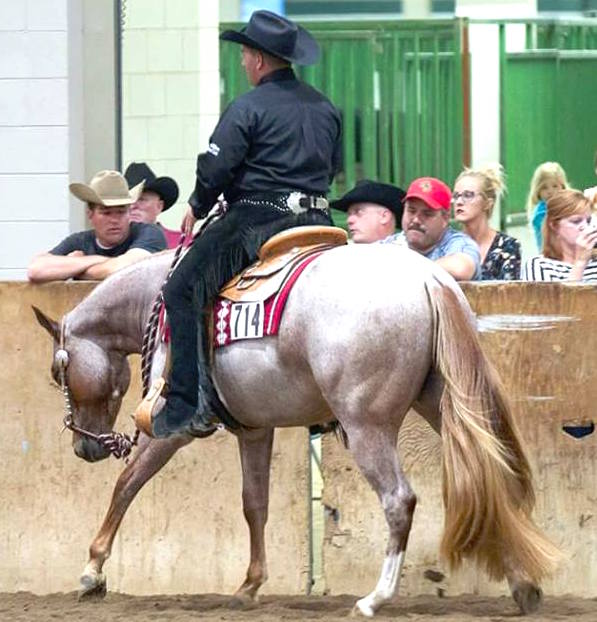 When Congress and NSBA World Champion trainer, Wade Black of Boerne, Texas (pictured right) brings the yearlings in from pasture in November, he starts their training with their learning of simple manners. Black explains, “I like first to teach them how to longe, learn the word ‘whoa,’ and get their respect on the ground before I move forward. When I feel I have their attention, I’ll proceed to the next step. Otherwise, I keep repeating what I’m doing until they show me they are ready for more advanced training.”
When Congress and NSBA World Champion trainer, Wade Black of Boerne, Texas (pictured right) brings the yearlings in from pasture in November, he starts their training with their learning of simple manners. Black explains, “I like first to teach them how to longe, learn the word ‘whoa,’ and get their respect on the ground before I move forward. When I feel I have their attention, I’ll proceed to the next step. Otherwise, I keep repeating what I’m doing until they show me they are ready for more advanced training.”
Multiple Congress Champion, and trainer for Chavez Enterprises, Maggie Grandquist of Pilot Point, Texas, also begins in November. “I prefer line driving and desensitizing them first. I never want to push one before it’s ready. I also feel that basic ground manners and trust are essential when bringing up a young horse because you want to create healthy habits that they will carry with them for the rest of their lives.”
Grandquist looks for “strength, trainability, and balance at all three gaits,” before moving on to the next step.
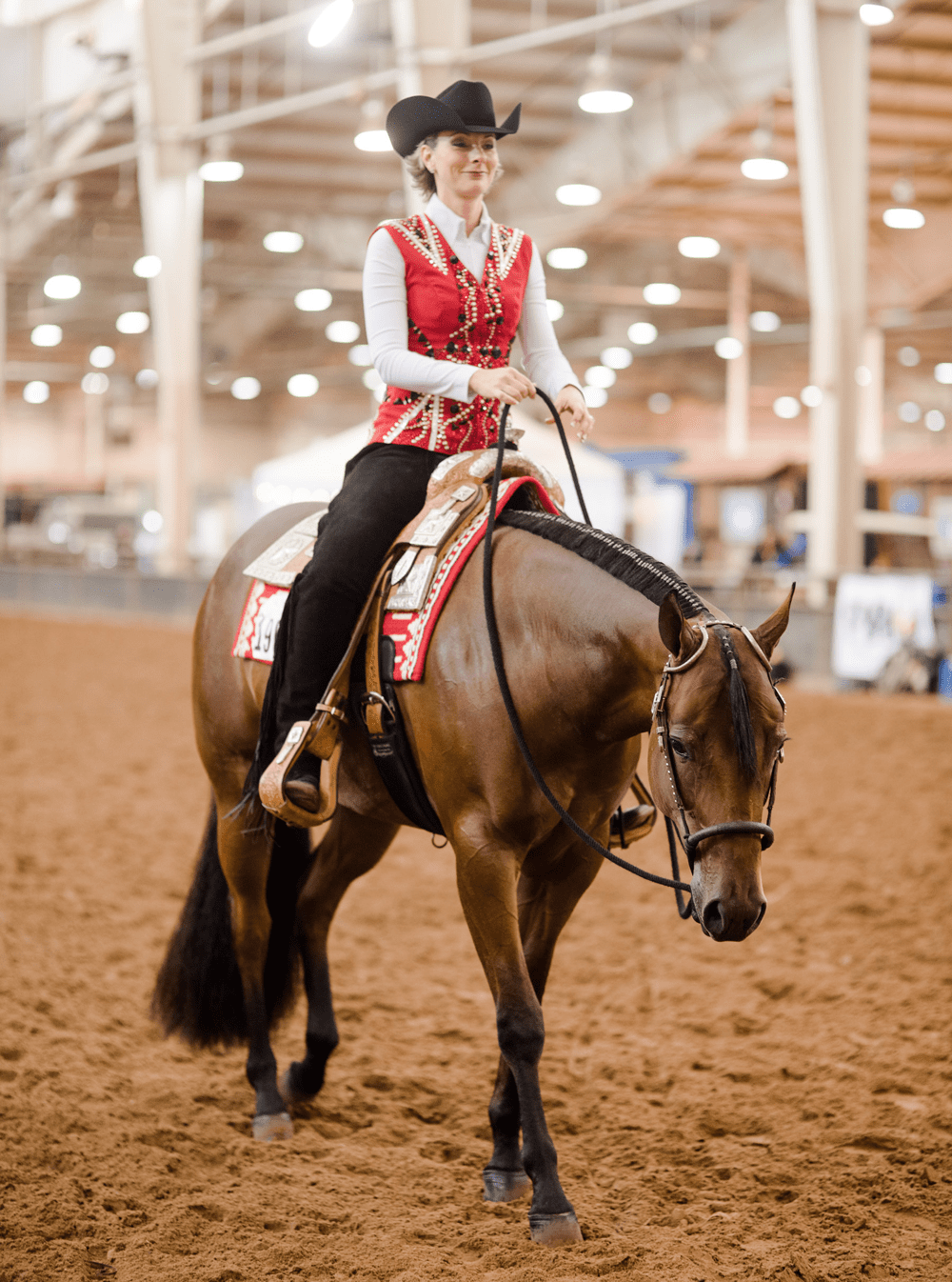
According to Ashley Lakins (pictured left), “We like to start saddling and longing colts by November or December. We usually do a lot of movements with the stirrups on each of them until they stand still and are quiet. We also hang a snaffle in their mouth while longing and tie them up in the stall a few hours a day until they are soft with their mouth. Each day, we try to progress. They do a pretty good job of showing us if they are ready to continue their training.”
AQHA World Champion trainer, Casey Willis, who trained and showed, KM Suddenly So Easy to win the Two-Year-Old Western Pleasure World Championship title in 2015, begins the futurity prospects in December. Head trainer for Masterson Farms, Willis, likes to focus his training on consistency and repetition. He explains, “Every colt is different. Some are more talented and athletic and may come along faster than others.”
The First 30 Days
Since each prospect is different, trainers’ methods vary regarding equipment choices and how best to teach the young horses. However, when it comes to the first 30 days of riding, most trainers focus on forward motion and creating positive experiences with their mounts.
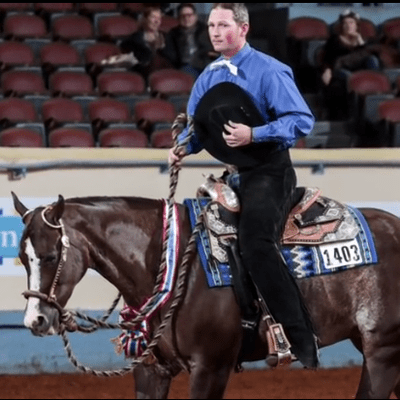 “We start ours in rope hackamores, and for the first ride, it is just, hang on!” Willis (pictured right) laughs and says. “The first three to ten trips are all about beginning the basics, stopping, steering, and forward motion. By 30 days, they should be able to stop, steer, back and go forward.”
“We start ours in rope hackamores, and for the first ride, it is just, hang on!” Willis (pictured right) laughs and says. “The first three to ten trips are all about beginning the basics, stopping, steering, and forward motion. By 30 days, they should be able to stop, steer, back and go forward.”
Wade Black also starts a horse free of a bit. “I’ll always start with a halter and lead rope or a side pull, then graduate to a snaffle. Starting in a bit can cause them to worry about what’s in their mouth rather than focus on what I’m teaching. The first few rides are getting them to go forward and follow their nose. After that, I’ll start to work on steering, cues for gaits, and getting them to carry themselves in a correct gait.”
The Lakins spend a lot of time on desensitization. “We like to sack them out with a feed bag, encouraging them not to get nervous. The first ride, we pull their head around each way,” Ashley states. “We like to use a broken short shank snaffle bit with a curb for the first ride. It gives you a little more leverage if they try to take off bucking. We walk, trot and lope on the first ride. Each ride, we just try to teach them to hold themselves up in their circle.”
The First 90 Days
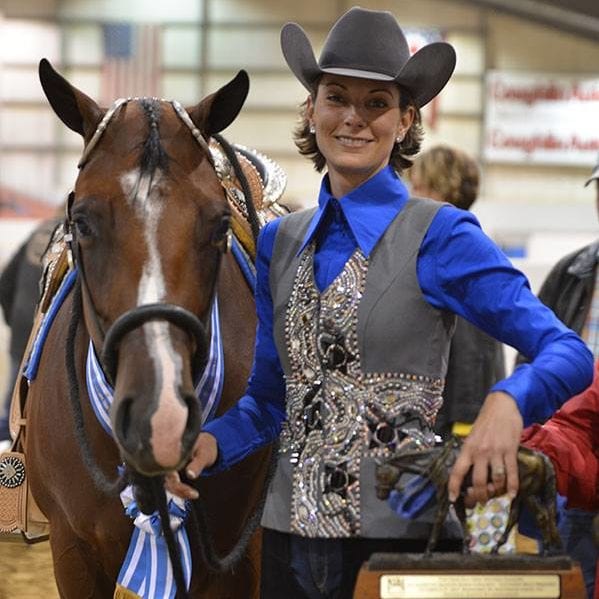 The first three months of riding are crucial in creating a solid foundation that will assist in developing a confident show horse. All of the trainers emphasize that it is necessary to take each horse individually and create unique learning plans.
The first three months of riding are crucial in creating a solid foundation that will assist in developing a confident show horse. All of the trainers emphasize that it is necessary to take each horse individually and create unique learning plans.
Ashley Lakins has certain goals for her two-year-olds. “In the first 30 days, we focus on just the basics: walk, trot, and lope with ease in a circle. By 60 days, we are pulling on their faces and trying to encourage them to put their heads down and lift their backs up.”
Through the first two months, Casey Willis likes to focus on “consistency and repetition,” and by 90 days, he strives to achieve, “side passing and body control.” Even if Willis reaches his goals by the end of the first three months, it is still not a foregone conclusion whether they will make it as a show horse. “Until I show one for the first time, I never really know for sure,” Willis smiles and states. “You just have to take everything day-by-day.”
Making the Futurities
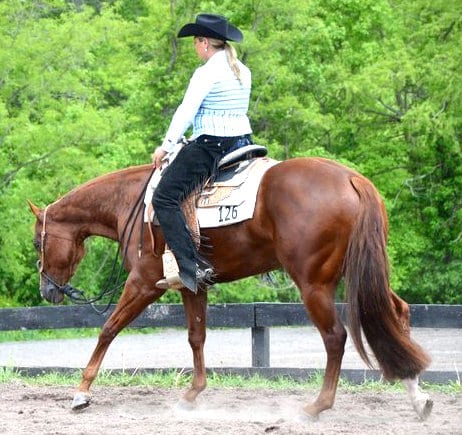 As far as picking who will make the futurities, Grandquist (pictured right) says, “They need to be mentally mature and stable enough to do their job. Usually, I like to know around the springtime whether they are going to make an early two-year-old futurity horse. It’s about letting them come along at their pace. Some come along quickly, while others require more time to grow and learn.”
As far as picking who will make the futurities, Grandquist (pictured right) says, “They need to be mentally mature and stable enough to do their job. Usually, I like to know around the springtime whether they are going to make an early two-year-old futurity horse. It’s about letting them come along at their pace. Some come along quickly, while others require more time to grow and learn.”
The Lakins, who started the great western pleasure mare, Whatscookingoodlookin, share a similar view, “Usually by 120 days, we can have a pretty good idea whether a colt is going to be ready for the early futurities. We let them tell us. Even then, we still don’t have an exact plan. They can change so fast. It’s really up to the colt when it will show. We can just prepare and do our best to make right decisions. There are many three-year-old events. It is not a bad thing to hold a two-year-old for a three-year-old event nowadays.”
Wade Black agrees, “I am always honest from the beginning about starting yearlings. I want to give the horse the best chance, and that just takes time. Every horse is different; I will never push one beyond what I think they are capable of doing. That won’t benefit me, the horse, or the owner.”


